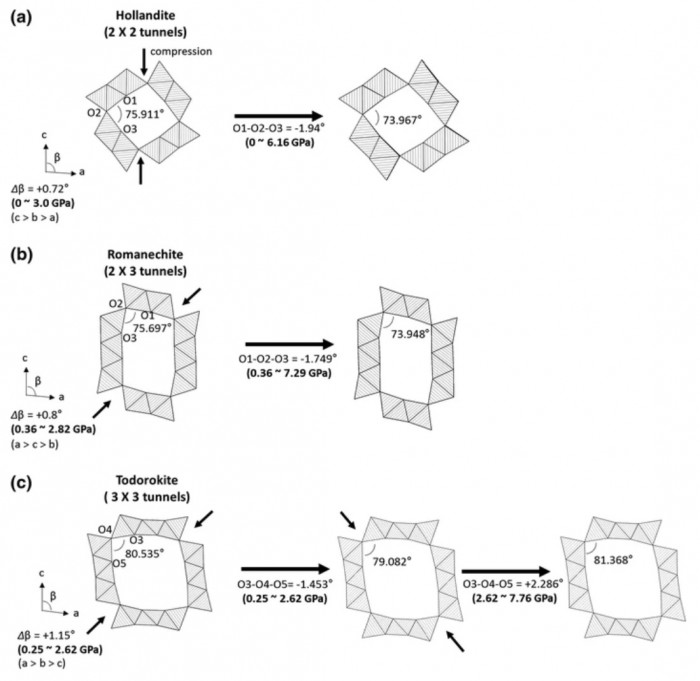“In situ high‑pressure synchrotron X‑ray powder diffraction study of tunnel manganese oxide minerals: hollandite, romanechite, and todorokite”
- Authors
G.C. Hwang, J.E. Post, Y. Lee*
- Journal
Physics and Chemistry of Minerals
Vol.42, pp.405-411, 2015.05 - DOI
Abstract
In situ high-pressure synchrotron X-ray powder diffraction study of three tunnel manganese oxide minerals (hollandite with 2 × 2 MnO6 octahedra tunnels, romanechite with 2 × 3 tunnels, and todorokite with 3 × 3 tunnels) was performed using a diamond anvil cell and nominally penetrating alcohol and water mixture as a pressure-transmitting medium up to ~8 GPa. Bulk moduli (B 0) calculated using Murnaghan’s equation of state are inversely proportional to the size of the tunnel, i.e., 134(4) GPa for hollandite (I2/m), 108(2) GPa for romanechite (C2/m), and 67(5) GPa for todorokite (P2/m). On the other hand, axial compressibilities show different elastic anisotropies depending on the size of the tunnel, i.e., ßa0 (a/a 0) = -0.00066(3) GPa-1, ßb0 (b/b 0) = 0.00179(8) GPa-1, ßc0 (c/c 0) = 0.00637(4) GPa-1 [c > b > a] for hollandite; ßa0 (a/a 0) = 0.00485(4) GPa-1, ßb0 (b/b 0) = 0.0016(1) GPa-1, ßc0 (c/c 0) = 0.00199(8) GPa-1 [a > c > b] for romanechite; and ßa0 (a/a 0) = 0.00826(9) GPa-1, ßb0 (b/b 0) = 0.0054(1) GPa-1, ßc0 (c/c 0) = 0.00081(8) GPa-1 [a > b > c] for todorokite. Overall, the degree of tunnel distortion increases with increasing pressure and correlates with the size of the tunnel, which is evidenced by the gradual increases in the monoclinic ß angles up to 3 GPa of 0.62°, 0.8°, and 1.15° in hollandite, romanechite, and todorokite, respectively. The compression of tunnel manganese oxides is related to the tunnel distortion and the size of the tunnel.












